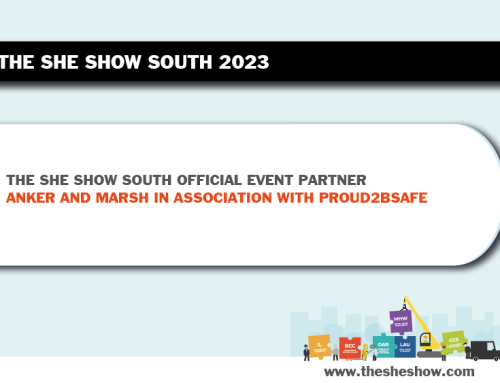Employee health and welfare remains a huge issue for the construction industry – in fact, 81,000 workers suffered from work-related ill health in construction in 2020 alone, while aquarter of work-related ill health cases (26%) were due to mental health. Faced with these staggering figures, Mark Wilkinson, Managing Director of Hillmont Associates, poses the question: are we approaching health and safety in the wrong way? And explores a new human-led approach that could provide the solution to a long-standing problem.
The emerging role of specialist contractors in the UK building industry presents its own distinct challenges. From scaffolding, groundworks and service connections, to electrical and mechanical work, glazing and asbestos removal, and much more, contractors are faced with a wide array of distinctive and varied safety challenges on any given day.
Despite its benefits, subcontracting can have an adverse influence on health and safety. By the very virtue of the brief periods spent on site by subcontractors, personnel have less familiarity with the inherent safety issues of site activities. While the fragmentation of the workforce can lead to inadequate communication and teamwork among contractors, as well as differences in safety cultures between main contractors and subcontractors on site.
Add to this the ‘payment-by-results’ model in which specialist contractors operate – which is often aided by the quick completion of tasks, resulting in subcontractors pushing themselves hard, working excessive hours, or side stepping safety where it impedes production – and it is easy to see why the industry has such a poor track record when it comes to safety.
Building a better safety culture
There is a growing responsibility on specialist contractors, consequently, to go beyond compliance with regulatory requirements and proactively develop and implement measures that will create a positive cycle of change.
A shift in mindset from compliance, to truly understanding their workforce, including their unique personality traits, different communication styles and behavioural tendencies, can assist contractors in lessening the likelihood of incidents on site.
What’s more, productivity and teamwork can be enhanced through mutual understanding and appreciation of each other’s skills – a clear advantage for projects involving multiple contractors.
Beyond compliance
Despite major overhauls of HSE regulations, significant improvements in training revamps and shifting attitudes towards employee wellbeing, major incidents and accidents continue to plague UK construction sites. All this is to suggest that the majority of pitfalls in safety stem from the one constant in any project – the people.
Understanding this human element, and gaining a greater perception of the behavioural tendencies of employees, can aid contractors in discovering more about their team’s strengths and potential limiters. They can then leverage this knowledge to build better relationships, communicate more effectively and deliver superior performance, resulting in increased safety.
What many fail to realise, is the behavioural tendencies of workers can have a telling impact on why individuals may get hurt on site. To put this into context, an action orientedconstruction professional’s practical and decisive attitude may typically be a major strength for delivering projects on time and to a high standard. Nevertheless, such an individual could get hurt through impatience and hurrying without getting all the details of a job.
A highly interdependent manager, conversely – who is concerned with other employees and carries influence – could come to harm by jumping in to help a colleague, getting distracted by other people or possibly even being overconfident.
Armed with the right knowledge, organisations are able to coach individuals to understand them, avoid the potential risks they carry, and tailor training according to how different individuals process information to generate greater engagement with the safety culture.
The power of the PDI
As the industry seeks to reduce workplace incidents and check poor practices that may lead to injury, or worse fatalities, heightened self-awareness has become a core pillar of safety regimes. Intuitive Personality Diversity Indicator (PDI) systems and training programmes – such as Hillmont Associates’ E-Colours PDI – are designed to elevate performance and achieve common goals through better collaboration between teams.
For high-risk industries such as construction, PDI indicators are a key enabler for understanding the behavioural characteristics of employees, and following up with appropriate training to build better cultures of safety organisation-wide. This is accomplished through understanding how different personalities impact safety decisions and how to mitigate these incidences through training.
As more and more specialist contractors, particularly those in the high-risk construction industry, place an emphasis not only on health and safety, but also creating a better culture, PDI tools and the associated training will offer substantial benefits. Whether that is heightened awareness of leadership styles, excellent communication and engagement capabilities, or higher levels of inter-personal trust, they could offer the answer to thesector’s HSE challenges.
To find out more, visit: www.hillmontassociates.com
Written by Mark Wilkinson, Hillmont Associates
About Hillmont Associates Ltd
Hillmont Associates Ltd is a consultancy with a difference. The company have a solution based mindset to evaluate and implement practical health, safety, environmental, quality and sustainability policies for clients. Hillmont Associates’ services cover the entire spectrum of health, safety, environment, sustainability and quality, with a suite of services that are uniquely tailored to each individual client. The business helps organisations to navigate through the audits, certifications, regulations, compliance, assessments, reports and more, delivering services through four core areas:
For more information, visit: https://hillmontassociates.com
Please note, the views expressed by the original article author are theirs alone and do not necessarily represent those of Washingtondowling Associates Ltd or The SHE Show and therefore we take no responsibility for the content or accuracy of this post.
















Leave A Comment